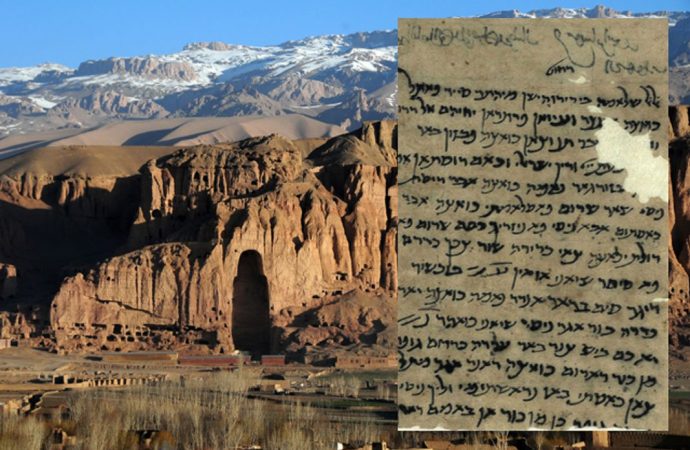A mysterious collection of nearly 100 manuscripts have been discovered in an Afghan Cave. An analysis of the texts revealed that they were owned by a Jewish family that lived along the ancient Silk Road about 1,000 years ago.
The manuscripts had been written in a plethora of languages, including Aramaic, Hebrew, Persian, Judeo-Arabic, and Judeo Persian.
The family that owned the manuscripts was headed by Abu Ben Daniel from the northern Afghan city of Bamyan. For many centuries, this area was famous for the giant Buddha statues, built in the 6th century, and tragically destroyed by the Taliban in 2001.

Bamyan Valley, Afghanistan (public domain)
According to Russia Today, the collection was purchased by Israeli antiquities dealer Lenny Wolfe, who lives and trades in Jerusalem. He came across the collection a few years ago, and in 2013 he purchased 29 of the documents. They appeared to him as a part of the ”Afghan Genizah”, a reference to the collection of 300,000 Jewish manuscript fragments discovered in a synagogue storeroom in Egypt. The ”Cairo Genizah” was found in the 19th century and, next to the Dead Sea Scrolls, is one of the most precious collections of ancient manuscripts. Wolfe then purchased other manuscripts in the collection six months ago. When he brought them to Israel, he gave permission to the National Library to study them.

A genizah is a storage area in a Jewish synagogue or cemetery designated for the temporary storage of worn-out Hebrew-language books and papers on religious topics prior to proper cemetery burial. The above image is a possible geniza at Masada, eastern Israel (public domain)
According to experts who analyzed the documents, the manuscripts were originally buried in a cave around a 1,000 years ago by the owners. They contain only text and no illustrations, and had been hidden in a cache consisting a mixture of legal and commercial manuscripts and sacred and personal letters. Some poems had been recovered too.
The researcher from the Hebrew University of Jerusalem, Ofir Haim, believes that the documents contain fascinating information, which allow the exploration of the lives of the Jewish community in Afghanistan of the time, such as how they lived, worked, and functioned as a family. According to Haaretz, one such letter translated by him shows how a man named Yair explained to family head Abua Nassar about why he wasn’t returning to see his family in Bamyan.
“If I could have made a living in Bamyan, it is true that I would have fulfilled your wishes. You know that in my occupation, if I am missing from the store for a day, on that day I will lose everything.”
In another letter, the same man states:
”Eggplants were not yet in abundance and so I did not send any. They were very small. I will send [some] next week.”
One of the most important pieces of the collection seems to be a notebook which Abu Nassar used to keep track of all those who owed him money over several decades, with some not only owing money but also quantities of wheat or barley.

A sample from the Afghan Genizah, dating back to the 11th century. Credit: Matthew Morgenstern
In October 3, 2013, April Holloway from Ancient Origins, reported another discovery by collector. ”A rare Hebrew text containing an archaic form of Hebrew and dating back to the 9th century has been revealed by a collector of rare biblical artefacts – and it is believed to be the world’s oldest Jewish prayer book.
It has 50 pages of Jewish blessings and is still in its original binding which shows Babylonian vowel markings. Experts have dated the text to around 840 AD, which makes it 400 years older than the earliest Torah scrolls every found. This could make it an important link between the time of the Dead Sea Scrolls and medieval Judaism.
The inside of the book is divided into six sections that discuss topics including the End Times and the Passover Seder. The first of these sections features a set of 100 Jewish blessings.”
Source: Ancient Origins

































Leave a Comment
You must be logged in to post a comment.